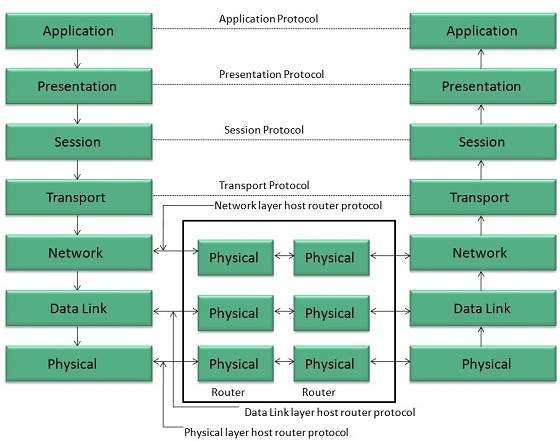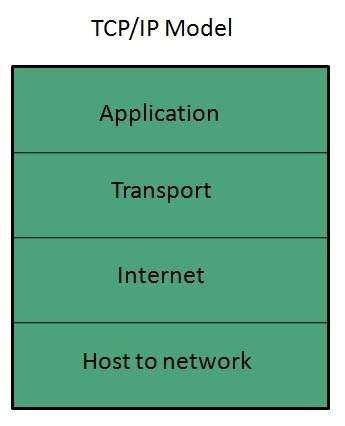
- Home
- Internet Overview
- Intranet Overview
- Extranet Overview
- Internet reference Models
- Internet Domain Name System
- Internet Services
- Internet Connectivity
- Internet Protocols
- Electronic Mail Basics
- E-Mail Overview
- E-Mail Protocols
- E-Mail Working
- E-Mail Operations
- E-mail Features
- E-Mail Etiquettes
- E-mail Security
- E-mail Providers
- Website Development
- Websites Overview
- Websites Types
- Website Designing
- Websites Development
- Website Publishing
- Website URL Registration
- Website Hosting
- Website Security
- Search Engine Optimization
- Website Monetization
- World Wide Web
- WWW Overview
- Web Pages
- Web Browsers
- Web Servers
- Proxy Servers
- Search Engines
- Internet Collaboration
- Collaboration Overview
- Mailing List
- Usenet Newsgroup
- Online Education
- Social Networking
- Internet Security and Privacy
- Internet Security Overview
- Data Encryption
- Digital Signature
- Firewall Security
- Internet Web Programming
- HTML
- CSS
- JavaScript
- PHP
- Internet Useful Resources
- Internet Quick Guide
- Internet Useful Resources
- Internet Discussion
Internet Reference Models
Reference Model
Reference Model offers a means of standardization which is acceptable worldwide. Since people using the computer network are located over a wide physical range and their network devices might have heterogeneous architecture. In order to provide communication among heterogeneous devices, we need a standardized model i.e. a reference model, which would provide us way how these devices can communicate regardless their architecture.
We have two reference models such as OSI model and TCP/IP reference model, however, the OSI model is a hypothetical one but the TCP/IP is absolutely practical model.
OSI Model
OSI is acronym of Open System Interface. This model is developed by the International organization of Standardization (ISO) and therefore also referred as ISO-OSI Model.
The OSI model consists of seven layers as shown in the following diagram. Each layer has a specific function, however each layer provide services to the layer above.

Physical Layer
The Physical layer is responsible for the following activities:
Activating, maintaining and deactivating the physical connection.
Defining voltages and data rates needed for transmission.
Converting digital bits into electrical signal.
Deciding whether the connection is simplex, half duplex or full duplex.
Data Link Layer
The data link layer performs the following functions:
Performs synchronization and error control for the information which is to be transmitted over the physical link.
Enables error detection, and adds error detection bits to the data which are to be transmitted.
Network Layer
Following are the functions of Network Layer:
To route the signals through various channels to the other end.
To act as the network controller by deciding which route data should take.
To divide the outgoing messages into packets and to assemble incoming packets into messages for higher levels.
Transport Layer
The Transport layer performs the following functions:
It decides if the data transmission should take place on parallel paths or single path.
It performs multiplexing, splitting on the data.
It breaks the data groups into smaller units so that they are handled more efficiently by the network layer.
The Transport Layer guarantees transmission of data from one end to other end.
Session Layer
The Session layer performs the following functions:
Manages the messages and synchronizes conversations between two different applications.
It controls logging on and off, user identification, billing and session management.
Presentation Layer
The Presentation layer performs the following functions:
This layer makes it sure that the information is delivered in such a form that the receiving system will understand and use it.
Application Layer
The Application layer performs the following functions:
It provides different services such as manipulation of information in several ways, retransferring the files of information, distributing the results etc.
The functions such as LOGIN or password checking are also performed by the application layer.
TCP/IP Model
TCP/IP model is practical model and is used in the Internet. TCP/IP is acronym of Transmission Control Protocol and Internet Protocol.
The TCP/IP model combines the two layers (Physical and Data link layer) into one layer i.e. Host-to-Network layer. The following diagram shows the various layers of TCP/IP model:

Application Layer
This layer is same as that of the OSI model and performs the following functions:
It provides different services such as manipulation of information in several ways, retransferring the files of information, distributing the results etc.
The functions such as LOGIN or password checking are also performed by the application layer.
Protocols used: TELNET, FTP, SMTP, DN, HTTP, NNTP are the protocols employed in this layer.
Transport Layer
It does the same functions as that of transport layer in OSI model. Here are the key points regarding transport layer:
It uses TCP and UDP protocol for end to end transmission.
TCP is reliable and connection oriented protocol.
TCP also handles flow control.
The UDP is not reliable and a connection less protocol also does not perform flow control.
Protocols used: TCP/IP and UDP protocols are employed in this layer.
Internet Layer
The function of this layer is to allow the host to insert packets into network and then make them travel independently to the destination. However, the order of receiving the packet can be different from the sequence they were sent.
Protocols used: Internet Protocol (IP) is employed in Internet layer.
Host-to-Network Layer
This is the lowest layer in TCP/IP model. The host has to connect to network using some protocol, so that it can send IP packets over it. This protocol varies from host to host and network to network.
Protocols used: ARPANET, SATNET, LAN, packet radio are the protocols which are used in this layer.